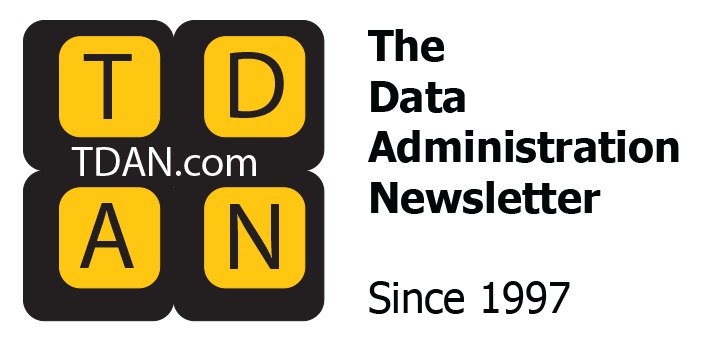
It’s July. That means budget season for most enterprises with a calendar fiscal year. And for data leaders, it’s time to shape how discretionary investments in 2026 can amplify strategic outcomes.
It’s always challenging to decide on the “best bets,” and this makes me think about what advice I should give my clients. This year is no different, but the pace of AI change has made it an even more difficult task. In this month’s column, I am going to share my mid-year analysis and recommendations for C-Level data leaders.
My focus is on discretionary budget items, not non-discretionary budget items related to maintenance and multi-year programs with prior budget commitments. I am also aiming my advice at what Everett Rogers called “Early Majority adopters” in his 1962 book, “Diffusion of Innovations.” For context, his five categories are: Innovators, Early Adopters, Early Majority, Late Majority, and Laggards.
Taking Stock: Reviewing 2025 (So Far)
It’s rumored that OpenAI will be releasing ChatGPT v5 around the time you are reading this column and that it will be five to 10 times better than the current state of the art. The leaps it will make are in the merger of its multi-modal (image, video, speech) capability and its ability to reason and act. It will be another significant leap toward making agentic use cases that include autonomy possible. I don’t know if it will achieve a five-to-10-times improvement, but even a two-to-three-times improvement would be staggering.
Over the past six months, we have witnessed another significant trend emerging in the AI landscape. It’s the placement of a server called a model context protocol (MCP) server in front of existing application and tool APIs. The significance is that an MCP server makes what’s behind it immediately discoverable. By discoverable, I mean an LLM can probe it as a resource to try and determine if it can help it solve a problem, then work out exactly how to “talk” to it via the API. It means we are a step closer to a semi-autonomous LLM-based agent being able to utilize dozens of MCP servers to carry out its work.
Science fiction? Nope. Check out N8N.io, Make.com, and a dozen others who are already building agentic offerings using available MCP servers. Is it perfect? Far from it, but it’s not a fad. It is the new normal and the way of the future. I must admit that when I published my book “The Goal is Autonomous Governance” in 2023, I was trying to explain that this was where we were headed. However, LLMs were just emerging, and I did not expect it to happen this quickly.
Mid-Year Thoughts
So, what does all this mean for C-level data leaders? It means a lot. Far too much for me to write in one column, but here are a few of my “headlines.”
First, let’s all keep our heads and stay grounded in the reality that good old-fashioned data work is not going anywhere for a while. I am referring to master data, data architecture, data quality, classification, access control, privacy, data integration, governance, analytics, lineage, and machine learning AI (remember that), among other topics.
Second, the pace of innovation and change is making it increasingly challenging to avoid selecting a dead-end technology or initiative that becomes obsolete before your team can even put it into production. It’s simply the pace of change that is causing that. I wish I had a magic solution. The simple and obvious choices are to become a late adopter, if business pressure permits, or increase the diversification of your investments and run longer pilot programs.
Third, it’s more important than ever that leaders step back from the changing tech landscape and evaluate its impact on skills, processes, and the new, merging division of labor and responsibilities.
Recommendations for 2026
From my perspective, we have been living the introductory period of generative AI, and 2026 is the final year in that period. By introductory, I mean coming to grips with what it is, its trajectory, and the change it will force us to face.
I refer to the next period as the “Agentic Reengineering Period,” which I anticipate will begin in 2027. The primary focus of this period will be to reengineer existing business and data management processes with agent-centric solutions and technologies. The primary objective will be to optimize and further automate the processes and begin to assign agents, rather than humans, responsibility for parts of the processes.
Describing it beyond that is too broad and deep for the column, but I will share what I believe you should be investing in to be ready for it.
- Invest in creating an API and an MCP server for one important internal application or analytic data source. Then, experiment with tasking an LLM to try to achieve specific objectives using it.
Rationale: Agents will become a recognized part of your workforce from 2027 on. The way they learn, understand context, and complete their work will depend on having access to the same resources that a human does. MCP is the way to achieve that. The sooner you build experience, the better. - Invest in a learning and development program for the role of solution architect. Then, move your first class through the curriculum to upskill some technical architects, data architects, analysts, and other roles.
Rationale: The most important skills in the future will be related to providing AI with clear requirements, goals, assumptions, in/out of scope, measurements, validation strategies, etc. Think of it as prompt engineering, but at an enterprise level of sophistication. These skills most closely match the role of a solution architect. It’s a shift in emphasis from low-level implementation details to expertise in communicating based on a deep understanding of processes, risk, policies, and other related dependencies. The goal for 2026 should be to establish this role and socialize the knowledge that it will be critical for the design and deployment of AI in the future. - Invest in metadata harvesting and curating good data lineage.
Rationale: Agentic AI with artificial general intelligence (AGI) requires being trained on enterprise-specific knowledge. For data leaders, that knowledge and context is the metadata of all data assets and how they are related. The stronger and more accurate the metadata corpus, the greater the impact AI can have on the organization. - Double down on master data programs and reference data.
Rationale: Agentic AI will be exposing the nasty underbelly of misaligned and conflicting data faster than ever before. 2026 would be a good time to put this house in order or close up any gaps. - Double down on writing good polices, risks, and controls expressed as rules.
Rationale: The key to agentic AI working well will be the instructions and guidelines it’s given. These should already exist in the form of policies, risks, and controls; however, they are likely not complete or specific enough for AI. 2026 would be a good time to revisit them and learn how to write them with a high level of precision. - Identify and plan a target opportunity in 2027 for swapping human engineers for agents. This involves identifying a step or steps in a process that would yield good results by giving Agentic AI responsibility for its maintenance.
Rationale: Eventually, most technical processes will be maintained by AI agents. 2027 will be a good year to begin moving through that reengineering by cherry picking high-value/low-risk opportunities.
Closing Thoughts
Some will argue that these recommendations are not aggressive enough, while others will contend that they are too aggressive. Obviously, ‘mileage will vary’ and each leader must determine where they stand on the adoption curve and what the business and industry they are in demands.
I’ve not said anything about the use of AI capabilities released as part of applications and tools that are already in use. That is a tricky topic. I believe each must be evaluated on a case-by-case basis. I’ve seen some truly amazing add-on capabilities, as well as some very poor ones, which appear to be a rush to market. The most significant risk is that you realize in mid-2026 that you have a portfolio of widely overlapping AI capabilities that are a drag on the budget and are creating more maintenance overhead than they are helping to offset.
Will we see more seismic announcements before the end of calendar 2025 that change my recommendations? I’ll give you a solid, maybe. However, the list above is quite comprehensive and charts a strategic course to align existing technology, roles, and skills, as well as strengthen data management practices, which will form a solid foundation for 2027.
